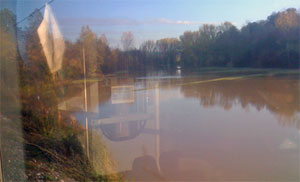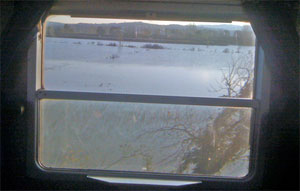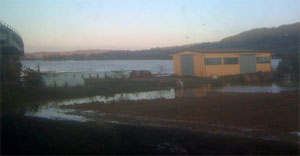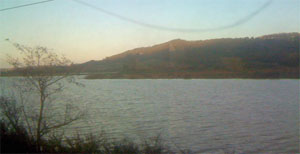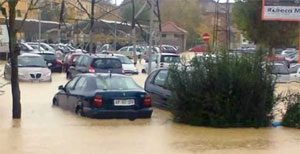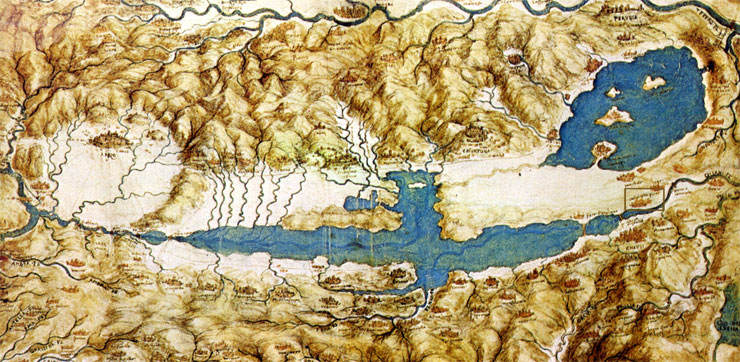
CdP
15 November 2012
We didn’t win the lottery this evening. So, two bits of luck out of three. That’s not bad going.
Firstly, our car which we had left last Friday in a carpark which flooded to unthinkable depths while we were away in Rome started first time and drove like a dream – there wasn’t even any fetid floodwater inside. Hallelujah!
Then back home, the fridge was working despite my being convinced that it couldn’t possibly have righted itself (whatever Monica the cleaning lady told me) without being reset after the power was off for 24 hours. I fully expected to come home to putrid damp muck across the pantry floor. Instead – perfectly frozen (re-frozen?) stocks.
While we spent six days in Rome watching movies at the Film Fest and catching up with friends, all hell broke loose here. For over 24 hours it rained solidly, and hard. It rained on countryside which had been baked dry in a three-month summer drought then unbalanced already by a couple of (short) torrential downpours.
We had seen the forecasts and had sent Indi up to dig out the rain channels which keep the road from washing away. They seem to have done their job. But when Monica called me on Monday morning, a chunk of Mario’s upper field had slipped down on to our road, blocking her way to our house. Very shortly after (it could so easily have happened as she passed) another much larger slip landed further up, just at the curve before Maria’s agriturismo. The comune sent diggers around immediately to clear the way: they’re good at that kind of small emergency intervention.
So much rain left CdP high and relatively dry. The road to Ponticelliwas blocked. The road to Moiano was blocked.Ditto the one down into the valley at Po’ Bandino. Here, we readlater, the problem was the CdP comune’s panic-strickenactions to stop Moiano being swept away by flood waters. Telling no one – the story goes – they opened sluice gates in the valley drainage system to allow the excess water to escape west towards Chiusi Scalo rather than east towards Moiano. Now, that Tresa-Chianaend of the valleyis basically one big flood plain, where nothing should ever have been built. And the dampest bit of all – damp even through the driest summer – is the Chiusi station carpark bit. So when the gates were opened, that went under.
Giuseppe my bulldozer boy called on Tuesday. “Did you drive to Rome?” he asked. “No,” I said. “Are you parked at Chiusi?” he asked. “Yes,” I said. “Metti l’anima in pace,” he said – resign yourself. From his perch on his bulldozer, all he could see were a few car roofs in a muddy lake. But he obviously couldn’t see over to the far side of the carpark where a few lucky vehicles were slightly higher up and only party submerged. Ours was one of them.
Every time rain falls heavily in Italy – and it does, frequently, though not so often around here – people seem faintly surprised that water can do so much damage. Or, if not surprised, outraged. But there’s no other possible outcome.
We were thinking this on Tuesday evening, as we tried and failed to walk across the Ponte Milvio in Rome to a dinner appointment with friends. The Tiber was extremely high – and was even more scarily so yesterday, Wednesday, as the flood tide from the deluge in Tuscany and Umbria processed through the city. The bridge was closed because a huge houseboat had broken its moorings and was broadside on, bumping against the 15th-century structure. But this happens every time the Tiber floods. Can the authorities not make stronger cables mandatory? Can they not send someone to check that knots have been tied properly? They have time before the flood tide sweeps down. But no.
And so it is with all those structures which have sprung up over the years – the last 50 years mostly – in places which are so very obviously meant to accommodate the excess water of swollen waterways that only the very blind, the very stupid or the very callous could possibly think they there weren’t going to have filthy floodwater swilling around them every time a bit more rain than usual fell.
In today’s La Repubblica, SlowFood founder Carlo Petrini lamented the passing of the peasant farmer, who respected his land and husbanded it in such a way that it stood up to extremes and continued to produce – replaced by agribusiness which exploited land for maximum gain and turned its back on any territory which demands care and attention.
All true. But also too picturesque. Much more banally, it’s crass stupidity and the quick buck which are the main culprits when it comes to landing Italy in a quagmire. And a failure to realise that in any battle against nature, you can chuck down all the cement you like and build all the protective walls you want, but nature is going to win. You’re going to be swept away unless you learn to understand her, respect her and work with her.
The Chiana valley down below CdP is in fact rather a strange case.The Chiana running into the Paglia, and the Pagliarunning into the Tiber all worked rather well,apparently, until the Romans became convinced thatit was the flood waters from these two rivers which wereresponsible for inundating Rome rather too regularly. So theybuilt a great big wall, somewhere near Fabro, to stopthe Paglia doing its damage, with the result thatthat plain down there started flooding regularly (withoutremedying the situation in Rome very muchat all). The Chiana (or the Clanis to Etruscans,then Romans) was navigable, which helped moveproduce around and which, incidentally, explains a coupleof places around here called Porto. By 1000, the wholevalley had become one big swamp; malarial mosquitoessoon arrived. But even at the beginning of the16th century, when Leonardo da Vinci went throughand did his wonderful map (above, in the Queen's libraryat Windsor), there were still settlements downin the marshy valley.
It wasn’t until the 18th century that the Papalstates which owned the southern part of thevalley, and the Grand Duchy of Tuscany whichowned the north got it together to drain the marshes;the canals they created are still there today,keeping the place mainly dry. But even these magnificent featsof hydraulic engineering allowed for some wetlands. Naturally,because flood water had to have somewhere to flowinto. And these, of course, have been built on since.
We still, rather charmingly, pay what Mario up the lane refersto as “la tassa sull’acqua che cade dal cielo” – the tax on water that falls from the sky, ie our contribution of €25 or so each year to keeping the drainage system going. It is perhaps the only tax I’m entirely happy to pay.
Apart from our collapsing road, we really are remarkably unscathed here. Let’s hope it can all continue to stand up to the repeat storms forecast for next week. The autumn which was threatening to erupt weeks ago has put itself on hold and only the poplars in the valley have turned golden… everything else is green, except the persimmons which are now almost bare.
Oddly, my medlars have decided to blet themselves right on the tree instead of my having to take them inside and leave them rotting for weeks. That speeds up the jam-making process somewhat.
I desperately need to get out into the orto where everything looks sad and limp except for the cherry tomatoes which just keep on coming. In the new vegetable patch, the broccoli have started producing immense heads. But some nasty bug has begun feasting on the leaves. Desperate measures are called for.
